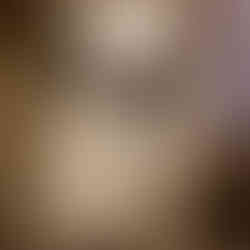Morgan Possberg | Artist of the Month | May 2023
- Making Treaty 7

- May 1, 2023
- 4 min read

Morgan Possberg Denne grew up in Calgary, Alberta and spent a large part of their childhood in Shediac, New Brunswick. They received a Bachelor of Fine Arts Degree with a focus in Textiles / Fashion from NSCAD University in Halifax in 2019, and subsequently attended the University of Calgary for a Master of Architecture Degree. Morgan has most recently attended the Banff centre for an Indigenous Haute Couture residency, taught traditional fish skin tanning classes in Prince Edward Island / Epekwitk, and is currently working on a commission for the Calgary Public Library. They are a millennial scoop and foster care survivor; with settler, Cree, Metis, and Chippewa familial connections through their Patrilineal line to Northern Ontario and Rama Mnjikaning First Nation in Southern Ontario on the shores of Lake Simcoe.
Morgan is both a writer and an artist with a focus in writing about the modern Two-spirit
Indigenous experience in Canada, queerness, colonialism, institutional / systemic racism, and uplifting BIPOC / Indigenous artists. Through their work, Morgan explores alternate stories to fill gaps created by colonialism with a focus on capturing inner truth and alternate possibilities.
Through their visual artwork they create imaginative, illustrative objects which could be seen as pieces of possible narratives, different ways to connect with the past and potential futures through layers of abstraction with no right or wrong answer. They focus on creating objects which have agency and are a part of an Indigenous based worldview and oral history. What matters is not whether the objects accurately recreate the past, but rather to capture an inner truth and a possible alternative reality of the object through a modern interpretation. In a sense, creating new culture from a series of “what-ifs” and new stories / lore.
Art Descriptions
Old Friend
Photo credits: Greg Ellison
Old friend is made of 19 Atlantic salmon skins which I tanned myself this winter. Fish skin tanning is a very visceral process; your senses will tell you what it needs. Too dry - add more oil, too stiff - needs more stretching. This process creates a familiarity with the material, a closeness which can translate into a tender object.
During my research about the history of fish skin tanning on Turtle Island it became immediately apparent that fish skin objects weren't well preserved or highly valued as there aren't many surviving examples to look at - with the exception of Inuit fish skin garments. This loss of a particular piece of culture due to the perceived (low) value of the material (to settlers) is concerning, but unsurprising. Indigenous people are now able to define our own material values to our art forms and traditional materials - this fish skin object was a part of my effort to revive fish skin tanning which would have been done by any culture that fished.
The presentation of 19 fish skins as a lamp shade strongly contrasts the old found pink 90's lamp stand which the shade is perched on top of. This juxtaposition allows for a space of dissonance between traditional Indigenous culture and the existing Indigenous culture during the 90s - the period of millennium scoop and also when the last residential schools were still in existence. This object lives in an alternate space where traditional culture continued and thrived, a space where an old fish skin lamp from the 90s could now exist. A lamp which might have lived in your uncles old hunting cabin, a hand-me-down of culture.
Left Leg and Right Leg of Buffalo Woman
Photo credit: Banff Centre Photographer, Rita Anne Taylor
Buffalo woman was conceptualized during the Indigenous Haute Couture Residency at the Banff Centre in 2022.
While buffalo woman's robe-skirts look like a buffalo robe, they are made instead from Canadian bred Icelandic sheep. This type of sheep has both wool and guard hairs which have been bleached by the sun over time. The sheep wool was painstakingly washed and picked clean and then felted into large sheets and sewn into the correct shape.
Buffalo woman's legs were an exploration into urban and disconnected Indigeneity, specifically from the perspective of foster care survivors and adoptees. Regardless of cultural disconnection or lack of cultural role models, our bodies still feel a connection to our homelands and ache for kinship and tradition. How can tradition and culture be approximated with what one has available to them in an urban centre surrounded by western culture? Sheeps wool becomes a buffalo robe, canvas becomes a hide, plastic straws perhaps as quills.
Just an Old Laptop
I have less to say about this one - I chose the form of a laptop to approximate because this is the way that many millennium scoop survivors have had to find our way back to culture, through technology and primarily Facebook stalking and messaging family members and suspected family members. Many people have had to piece together the tattered remains of family lines and kinship through the traumatizing experience of searching through Facebook profiles looking for familiar faces and names.
A Cradleboard and Hat seen through a Dream
These two objects are made from textile industry waste - silk noils which are just the little bits that fly off the silk spinning machine in the process of making yarn. I took this waste and tried to recreate objects that I once saw in a dream, something similar to a cradleboard, the other a large hat.
Check out Morgan's website here!
You can follow Morgan on Instagram @m.possberg!
















Comments